Things I Enjoyed: Spring 2025
Published: 6/8/2025
Inspired by the long running video series by Super Eyepatch Wolf, “My Favorite Things”, I have decided to start writing in a new series of blog posts about the things I have enjoyed the most during each season of the year. In the coming posts, I’ll be focusing primarily on all sorts of media, be it films, books, TV, and more. Of course, if things other than media are of special importance to me, I’ll make sure to include them! This format serves as a good excuse to look back at the highlights of each season, and it allows me to dedicate time to reflect upon the smaller yet relevant things I enjoyed that couldn’t make it to a dedicated post or review. Hopefully this will also help me warm up to writing more often for this blog.
Films
For my wife and I, the year so far has been the most active we have been in a long time when it comes to movies. Having finally moved in together has allowed us to spend more time than ever on films compared to when we were dating long distance. It has been nice to re-watch Wallace & Gromit: The Curse of the Were-Rabbit, Chicken Run, Paddington, and The Wrestler, among other great movies. Of course, our selection hasn’t been limited to re-watching only. Exploring the catalog of streaming services such as Kanopy (with free access provided by the Seattle Public Library!) and going to the cinema more often (shout-out to SIFF) has allowed us to discover new favorites. Out of this spring’s films, a few stand out from the rest.
Paddington (2014) & Paddington 2 (2017)
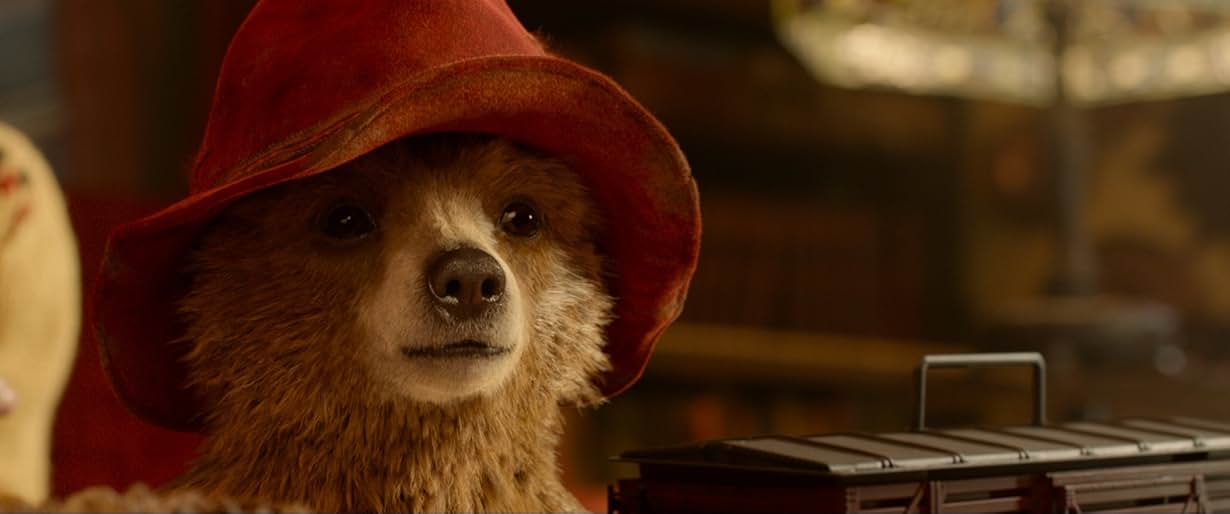
I originally watched Paddington a few years after it released; my wife hadn’t, but I thought it could be to her liking. I was aware that a couple of new entries in the series were released after the first one, but they remained in my “movies for some other time” list. This is the year we decided to watch the whole thing in the span of a few days. Of the trilogy, the first and, most importantly, the second installments stand out to me. They’re fun and great for families to enjoy.
The first film introduces the namesake of the series, Paddington, a bear raised by a couple of older bears, Aunt Lucy and Uncle Pastuzo, in the Peruvian wilderness. The bears have a marmalade sandwich eating habit, as well as the ability to speak like humans, both of which they learned from an English explorer in the past. After disaster strikes and destroys their home, taking Uncle Pastuzo’s life, Paddington is forced to move to London to find a new family who will take him in, while Aunt Lucy moves to the home for retired bears. What follows is an adventure full of silliness, comedy, and cuteness in which the protagonist meets the Browns, who slowly warm up to him and accept him as one of their own.
The second entry in the series I can only describe as more of the same cute and innocent bear, as well as more fun, laughs, and emotions compared to the first one. Now, a well known and respected member of his community, Paddington starts working towards buying a book from his friend’s antique shop, so he can give it to Aunt Lucy for her birthday. All is well until the book is stolen and our protagonist is accused and jailed for a crime he didn’t commit. Being in an unknown and hostile environment, he’s forced to wait until his family can prove his innocence and get him out of jail. It’s there where he makes new friends after some initial trouble with the other inmates.
To me, this series shines due to its wholesomeness, positivism, silly humor, and endearing cast. While the Browns family can feel too big at times, not allowing time to fully develop each and every member, as a unit they’re still a big part of what makes the series work. Paddington is an easy pick if there are any kids present – even without kids, I’d recommend it to those who enjoy family movies or want a light-hearted comedy. I liked the portrayal of Paddington as an outsider in London, trying to fit in his new environment without abandoning his identity. Despite the challenges he faces and the hostility shown to him by some, he remains an optimist and tries to help others out. It’s all very cartoonish, and it works in the series’ favor.
Anatomy of a Fall (2023)

Anatomy of a Fall portrays the final stages of a failing marriage being put under the microscope after the death of the husband, Samuel, with the wife, Sandra, being accused of committing murder. The couple’s kid, Daniel, becomes a key witness in the investigation and must pick a side: did his mom do it? This tense courtroom drama constantly made me change my understanding of the murder question as more evidence is shown, testimonies are heard, and experts are brought in to present their theories of that evening’s events.
All throughout the film, the question of whether Sandra Voyter killed her husband or not is in everyone’s head. However, the most intriguing aspect of the movie wasn’t the answer to that question, but instead it was the way their relationship was dissected as part of the legal process. All the ugly parts about Sandra and Samuel’s marriage are laid bare for everyone to see, including Daniel, who wasn’t fully aware of his parent’s troubled relationship. The prosecutor, naturally, tries hard to create a guilty narrative out of testimonies and evidence shown to the court. The case quickly evolves and the couple’s past and their most private moments become spectacle for all to see and judge. It reminds me of how some court cases become part of public conversation and people are quick to cast judgment with incomplete information or are easy to join “teams” for either the defendant or the accuser. Perception is all about what is known and what remains a mystery. Furthermore, the interpretation provided by multiple people for the same piece of evidence or fact can greatly influence the conclusion a jury, as well as the public, will reach.
I’ll certainly give more courtroom dramas a try after this one.
I, Tonya (2017)
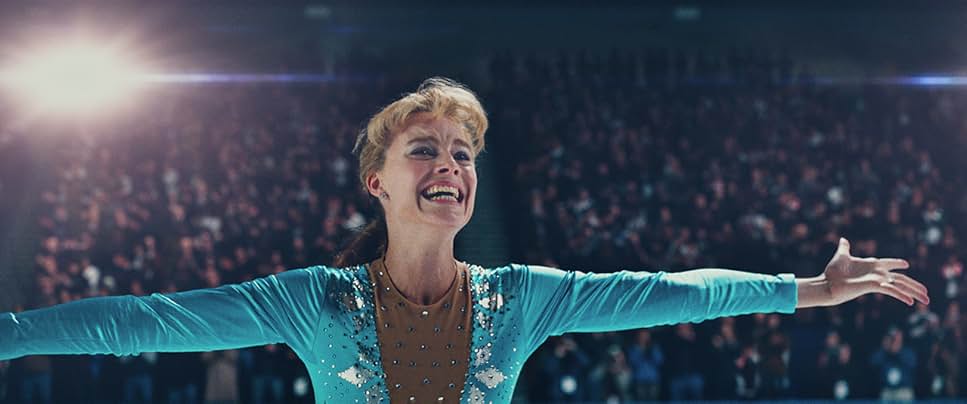
I, Tonya is a movie based on the true story of Tonya Harding. An outsider to the prestigious and expensive sport of figure skating, Tonya must work hard to make it to the top from a young age if she wants any chance at success. A multitude of obstacles other than pure skill make this even harder for the protagonist. Things are rocky for her at home, starting with her being the child of an abusive mother, and continuing later in life when she marries, only for the relationship to quickly become abusive too. Furthermore, a lower class upbringing, short temper, and overall outsider status make it hard for her to rank high in competitions despite her outstanding skill. It turns out that she’s seen as undesirable or unworthy by others in the sport, especially judges scoring her presentations. All of this builds up to a boiling point until the incident happens, in which Jeff, Tonya’s husband, and his friend hire some guys to send threat letters Tonya’s competitor, Nancy, so she doesn’t perform well in competition and doesn’t earn a place in the Winter Olympics, thus making it easier for Tonya to secure a place. One of men ends up physically assaulting Nancy, intending to break her knee, which becomes a nationwide scandal. Things quickly spiral out of control after that.
This movie had me nervously laughing every few minutes at all stupid decisions being made. One mistake leads to another, and instead of stopping to fix things or acknowledge that it has all gone too far, the decision is to double down and commit harder to the plan. Everyone’s trying to portray themselves as if they were in the right, constantly shifting blame and downplaying their mistakes. Having unreliable narrators really contributes to the comedy of the film.
Independently of the accuracy of the real life events portrayed in the film, I, Tonya tells an intriguing story about the world of elite sports and how outsiders, especially those not already belonging to an inner group, can have a hard time finding success. The story showcases how systems that present themselves as meritocratic actually have undisclosed parameters for success that depend on a moneyed and privileged upbringing. This knowledge can only be attained through knowing others that are part of the same social group, know the jargon, are aware of traditions, and can offer feedback on subjective matters that highly impact success in that specific environment. Additionally, not being able to pay for expensive equipment and coaching is another barrier that leaves many out of this privileged club. Although Tonya can, at a steep price, afford the time to spend long hours practicing and earns the skills required to be successful figure skater, she’s set back from the start due to a multitude of factors: her being seen as too poor and lacking status, her unwillingness to follow pick the “right” music for her presentations, and her lack of money to buy high-end outfits for competition.
Pom Poko (1994)
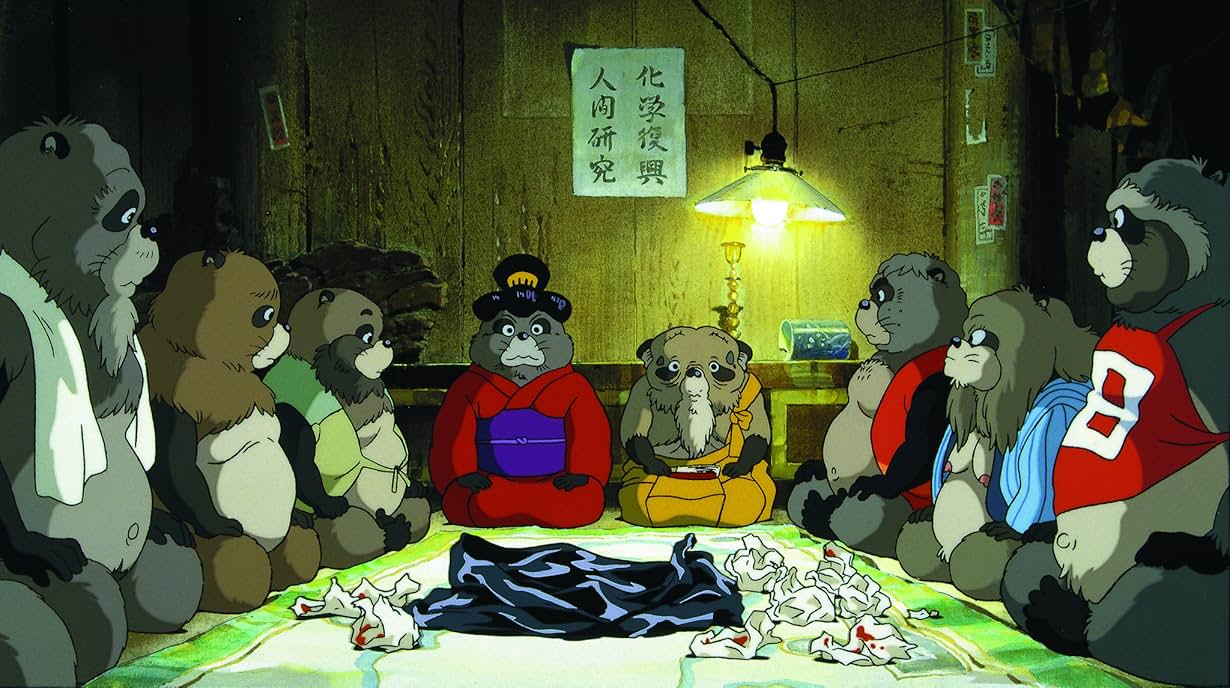
Pom Poko tells the story of a community of tanukis (Japanese raccoon dogs) who’re slowly losing their habitat to the accelerating development of the Japanese countryside. As once rural communities become integrated into the urban core, the movie’s protagonists must find ways to fight back lest they risk losing their home. The tanukis’ efforts scale in violence towards humans as the plot progresses, and within the group there’s no clear consensus as to how to best tackle the situation: some suggest pacific approaches while others opt for a more violent route. Time is running out and the attempted solutions don’t seem to be working as well as the community elders would have hoped for.
A story about environmentalist tanukis who must fight to preserve their habitat is not what I had in mind when we picked Pom Poko for our movie night. In retrospective, it definitely fits in with the rest of Studio Ghibli’s catalog, from Princess Mononoke to Nausicaä of the Valley of the Wind. I greatly lament that the discourse surrounding this film mostly focuses in how weird it is that the tanukis are portrayed as having magical ball sacks, as it completely misses the impactful message of environmental destruction by humankind and how that impacts most animal species. It also showcases a clear unwillingness to engage in good faith with the depiction of cultures other than our own, especially when it comes to taboo topics, as is the case of sexuality in the west. Pom Poko speaks to a real phenomenon of humans slowly bulldozing nature and paving over it with asphalt as urban development continues without worry about the environment. Species are left without their original habitats, and while some of them find ways to adapt, not all are as successful, leaving them instead to face the threat of extinction.
In addition to the environmentalist reading, there are parallels to the acts of armed resistance seen in parts of the world from people fighting to avoid the destruction of their homeland. The story offers no clear answers as to what the most effective way to resist this erasure is, as shown by the many unsuccessful attempts by the tanukis to scare humans away. The outcome of their struggle is pretty bleak after all is said and done, but that means that the full set messages being told were not sacrificed for a cheap happy ending.
This ranks high for me as a must-watch Ghibli movie, and I’d recommend it to anyone who hasn’t watched it yet.
No Other Land (2024)
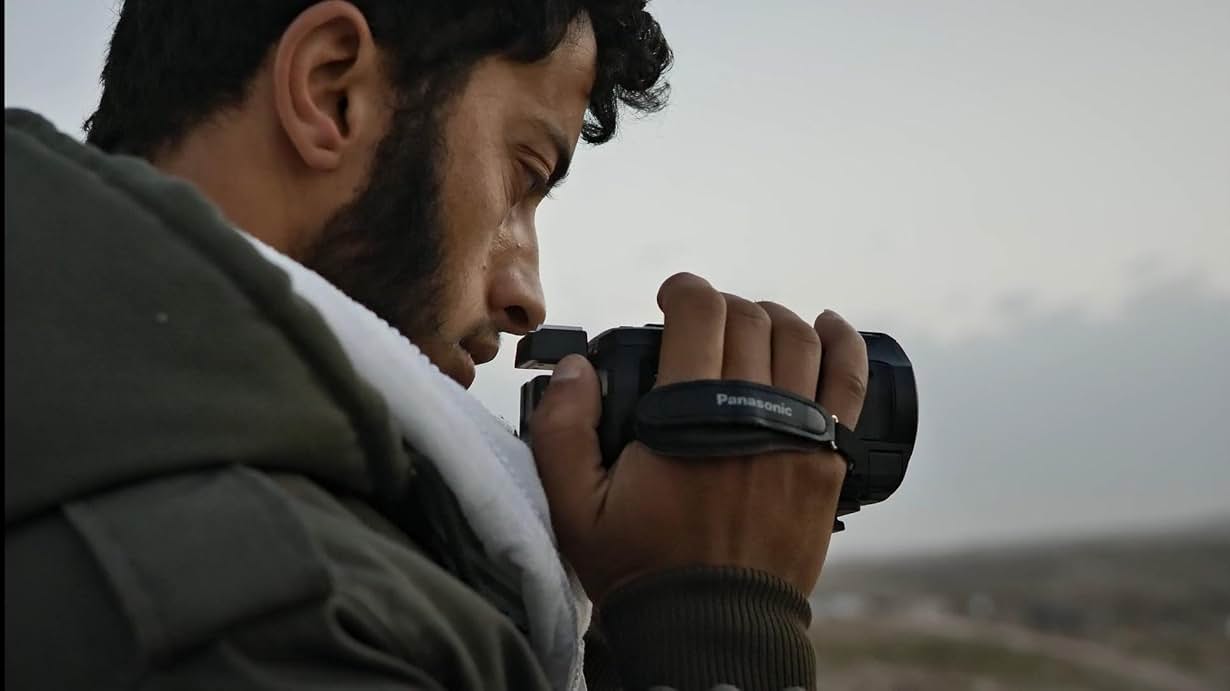
No Other Land, for me, is the documentary of 2025. The world has been watching and listening all about the atrocities being committed by the Israeli government in Palestine with more attention now than ever. This film intimately details to the daily lives of those living in the occupied West Bank, the repeated destruction of their homes, the constant harassment and acts of violence perpetrated by settlers and the army alike, as well as the indifference and even downright enjoyment shown by some of those carrying out this harm. There is only much that news reports and statistics about the horrors of the world can do, and that is why on the ground reporting and documentary storytelling like this are so powerful. Showing the evidence of the violence and the life altering outcome of these events for the victims can help sensitize people and lead them to take more direct action. There are no nameless victims in this or any genocide, each and everyone of them has a name, a story, a family, a home, and they’re all being lost every single day.
Watching No Other Land was hard for me. The cruelty shown on screen was not easy to see, but it definitely was eye opening. I consider this film a must-watch for everyone at the moment, without exception. It prompted me to learn more about the history of Palestine and find ways to do something about the current situation. The BDS (Boycott, Divestment, Sanctions) Movement is a good resource for people to start taking action, however small it may be, towards stopping this ongoing injustice.
The Menu (2022)
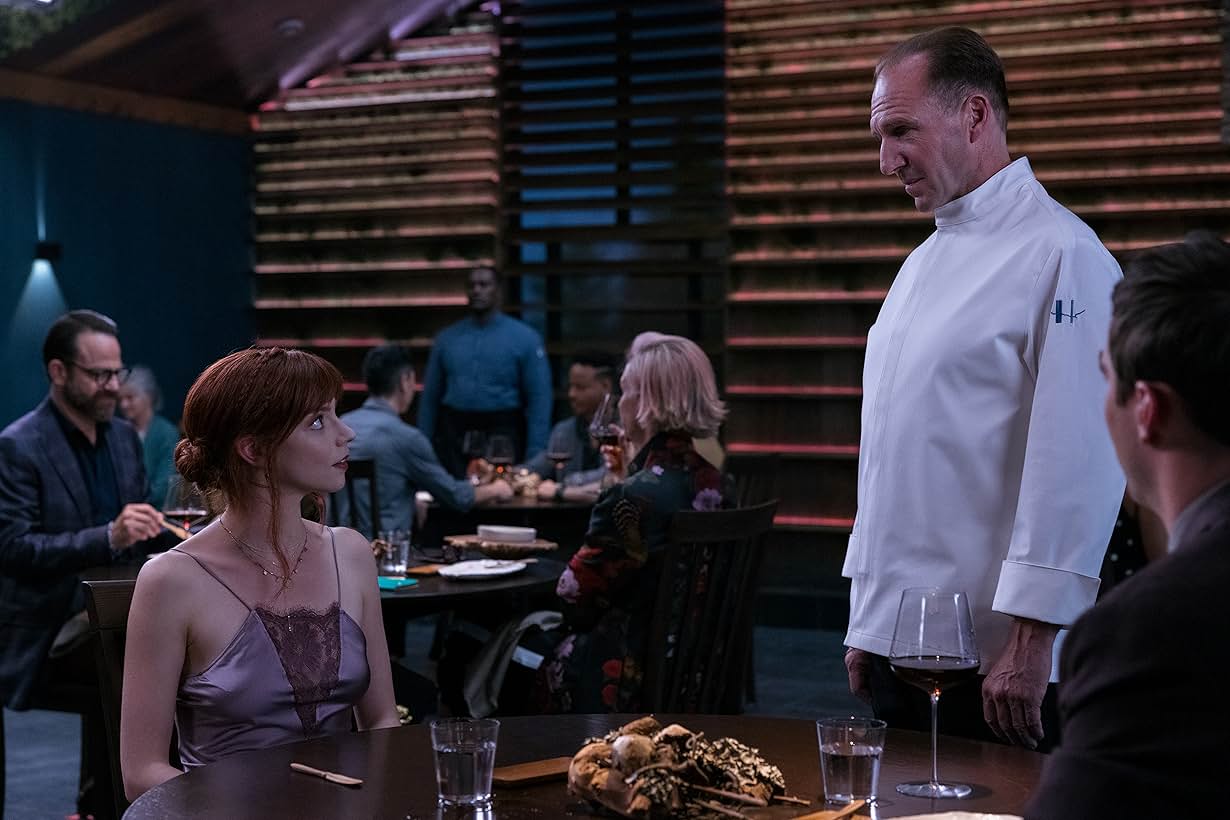
The Menu presents a thoughtful critique of the world of high art in the form of a dark comedy that takes place in a high-end restaurant lead by a strict, perfectionist chef, with reservations available for only a select few. In the film, everyone’s role in the death of art is dennounced by Chef Slowik. All visitors earn his ire: the ruthless art critic and her editorial enabler, the clout-chasing artist, the overbearing investor, the “don’t you know who I am and who I work for” bros, mindless consumers who seemingly only enjoy the high status of it all, and the obsessed fanatic. In one hour and a half of run time, the story takes time address for criticism all, including the chef himself, before a fiery grand finale.
The dichotomy between artist and consumer, as well as that of privileged and unprivileged, is the main focus of The Menu. As Slowik himself tells Margot, a line is drawn among those working in the kitchen (and more widely, those who must sell their labor to make a living), the “shit shovelers”, and those who are there to consume. Everyone in the restaurant’s staff obsessively hone their craft and make sacrifices every day in order to please an insatiable public. In the process of making art for others, one’s own love for it can die until only an empty shell of that love is left behind. Creatives are also forced to find a clientele that will finance their endeavors, thus further diluting their own artistic vision in order to make things more palatable. None of the attendants are interested with the actual substance of the artistic experience they are supposedly there for.
TV
I’m not one to watch much TV, but this spring had some outstanding shows that I couldn’t miss. Some series I started due to the hype of their current season, which will have to wait in my “plan to watch list”. Perhaps I’ll write about them in future entries for this series of posts.
Adolescence
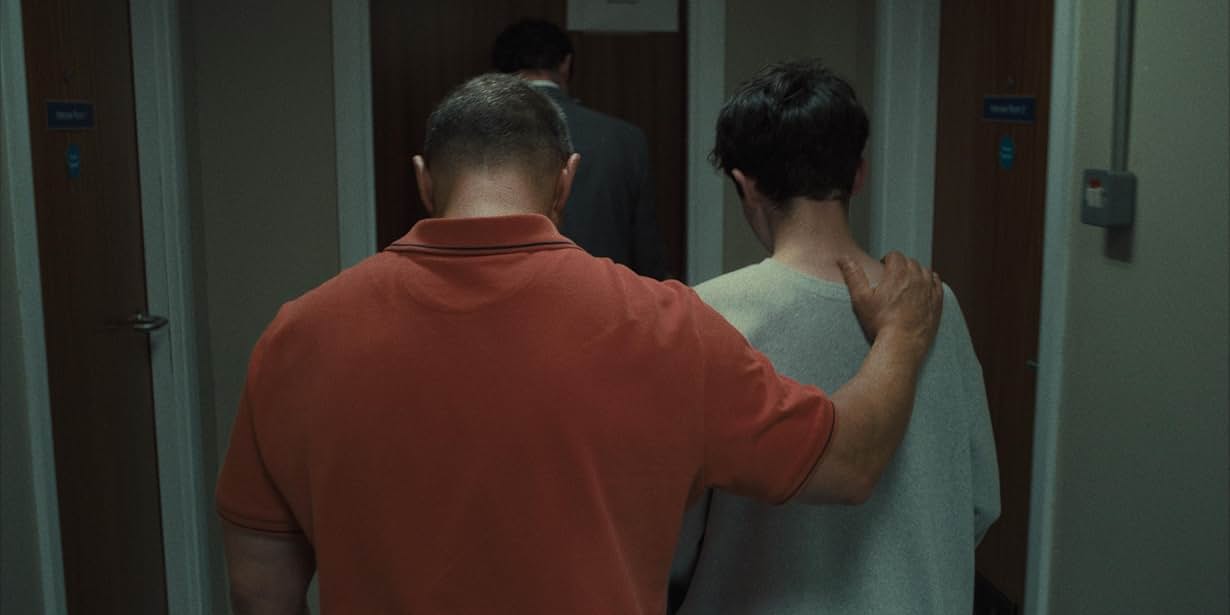
All about Adolescence screams quality to me: the single-shot episodes, the photography, the acting, the writing, and the way it addresses its themes. This mini series is a dive into the effects of the manosphere in the youth, and the limited preparation we, as a society, have to tackle it both in the family and at school. I would have expected the execution for such a topic to be sloppy, given how toxic online spaces targeted to male audiences have become recently. My initial cautious expectation of an out of touch representation of these themes was completely wrong. In truth, the toxicity has always existed, but now the most extreme representatives for the manosphere have started to reach the mainstream (some even enabled and praised by politicians). However, no knowledge of internet culture or individual icons of this movement is required to see the real life effects that this content has on young men, and that is why Adolescence does excels at exploring its themes.
As the show portrays, the problem of misogynistic violence doesn’t start with a sexist YouTube video. The environment where a young person develops is what makes them susceptible to fall for that kind of content. Problems can start from life at home, where smaller issues go unacknowledged or are simply ignored, letting them grow unfettered until they manifest at their most extreme. Unsupervised and unrestricted access from a young age to the internet can definitely accelerate this manifestation, though, as it allows an endless stream of vitriol to be consumed without any sort of critical assessment of its contents.
Anime
I don’t stay up to date with the latest seasonal anime shows like I did when I was a teenager. What I gained instead was a greater appreciation for older shows, especially now that I no longer feel the made-up pressure to keep up with whatever is the latest and most popular in the season. Still, from time to time, new series will become so popular that it’s hard to ignore. I’ll see the hype all over the place and the FOMO can get to me sometimes. In recent memory, shows like this have been Frieren: Beyond Journey’s End, Delicious in Dungeon, and Dandadan. This season also has one such example.
The Apothecary Diaries Season 2
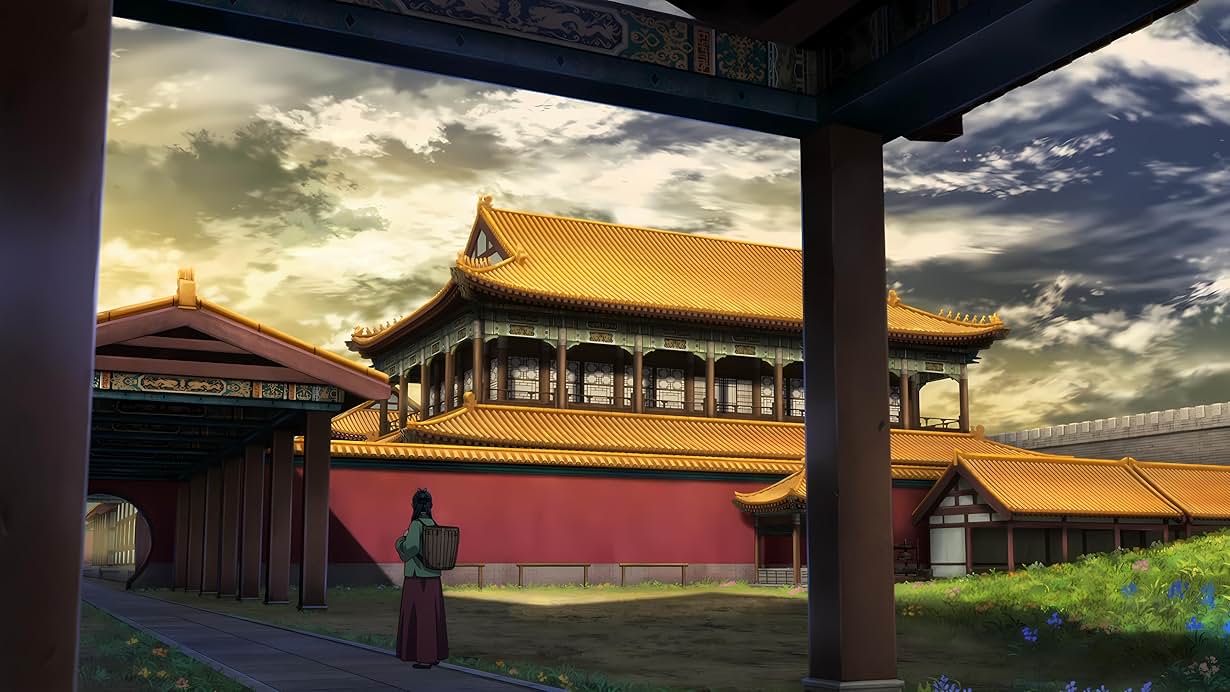
The second season of The Apothecary Diaries has been a great follow-up to the events of the first one. It feels like the first season served as a smaller setup stage for the broader set of events that take place in the second season. New characters have been added to the cast, some of them tied to the threats of earlier episodes, but the scale has greatly increased. Threats are no longer contained within the rear palace. It’s nice to see Maomao once again doing detective work in seemingly separate cases that actually tie to a bigger one in the background.
I have enjoyed tuning in weekly to watch the latest episode, as it allows me to enjoy the series over time instead of binge-watching it. This works great for a series such as The Apothecary Diaries that leaves so many questions unanswered when the ending song starts to play. It allows my wife and I to create theories about what’s going to happen next instead of giving us the instant satisfaction of knowing the answer by playing next immediately. Theory crafting is my favorite part of watching seasonal anime, and one of the reasons why I still do it from time to time. At the time of writing, the season still has 5 episodes left and much is yet to be explored.
This season is probably the excuse I need to start reading the light novel and/or the manga.
Books
For me, this year has been marked by nonfiction books above all else. Non-fiction has been the mood of the season, and I’ve been greatly enjoying it. This contrasts to my older habit of almost exclusively reading fiction instead. A change of pace can be great for the mind. Also, I recently joined a book club for the first time. The club is focused in global issues and contemporary politics, which aligns with my reading interests at the moment. I have loved to have monthly conversations about my most recent reads with others in the group.
Mood Machine
Earlier this year, I watched a couple of interviews with Mood Machine’s author, Liz Pelly, which were all about the negative effects of Spotify has had in the world of music. The interview with Anthony Fantano was what peaked my interest in this book. I was aware of the power that Spotify has to influence habits via recommendation algorithms and editorial playlists; my own music discovery strategy had been influenced by automatic recommendations after I finished listening to a playlist or album. The way Pelly talked about the companyi, however, hinted at a deeper problem that I wanted to learn all about. What followed was a whole journey through the different eras in the history of Spotify, from its origins as a platform relying on pirated content to get off the ground up until today, now a behemoth with almost total domination of the music streaming world.
Mood Machine was a read that had me questioning my habits, and it made me realize that my role as a user was not as blameless as I would have originally thought. The promise of an infinite music library available at all times on all devices for a small recurring fee seemed a no-brainer at first from my point of view back when I was a student, even more so with a family plan. This book goes in full detail about the multitude of techniques used by Spotify to ensure that as little as possible reaches the hands of artists, especially indies with less bargaining power compared to big pop stars, and instead more money is put in the pockets of corporations and executives. There is a single pie, and the big players want to have as many slices as possible, leaving only crumbs behind for those who cannot afford to play by their rules. The rise of ghost-written music is covered as well, which is commissioned by the platform to be licensed on favorable terms and then ranked high in all the top playlists to take away listening time from other artists. This sort of vertical integration, as so often is called in other industries, basically constitutes a monopoly. Then there is the coercion to ensure all play with under these unfavorable terms lest the algorithm drops them and their listening base be taken away.
While this all sounds bleak, Pelly also goes on to covers alternatives to the current model of music consumption, alternatives that more fairly and directly reward artists for their labor. Clearly, the platform is not working for the people making the product that bring in costumers, so new ideas must be explored, and perhaps a look back at what has worked before can serve as inspiration too. Everyone involved in the music world, from creatives to listeners, have a role in shaping the way art is consumed and it’s up to community members to find what works best for them. Relying on tech companies to come up with solutions hasn’t worked so far, and it won’t work in the future. As shown by Spotify’s example, outsiders to these creative communities have little to no incentive to ensure the well-being of the people they economically benefit so much from. I highly recommend anyone who’s into music to read Mood Machine. It’s time to start questioning our role in music and find alternatives that actually reward those making the art we all love.
Closing thoughts
It was fun to take note of this season’s highlights these past few months. Still, some things were left out due to my indecisiveness. Perhaps in future entries I’ll figure things out! I’ll continue iterating on this format in the hopes of finding the motivation to write more often and to ensure deeper appreciation of the things I enjoyed each season. Spring 2025 was good for me, and I hope summer will provide plenty opportunities to keep finding things worth writing about.